Thirty years since Operation ‘Storm’, Croatia’s military parade in Zagreb on 31 July 2025 was more than a patriotic display: it was a deliberate show of strength and strategic alignment. Against the backdrop of the war in Ukraine and hardening subregional alignments, Zagreb is sending a clear message: it is ready to step up.
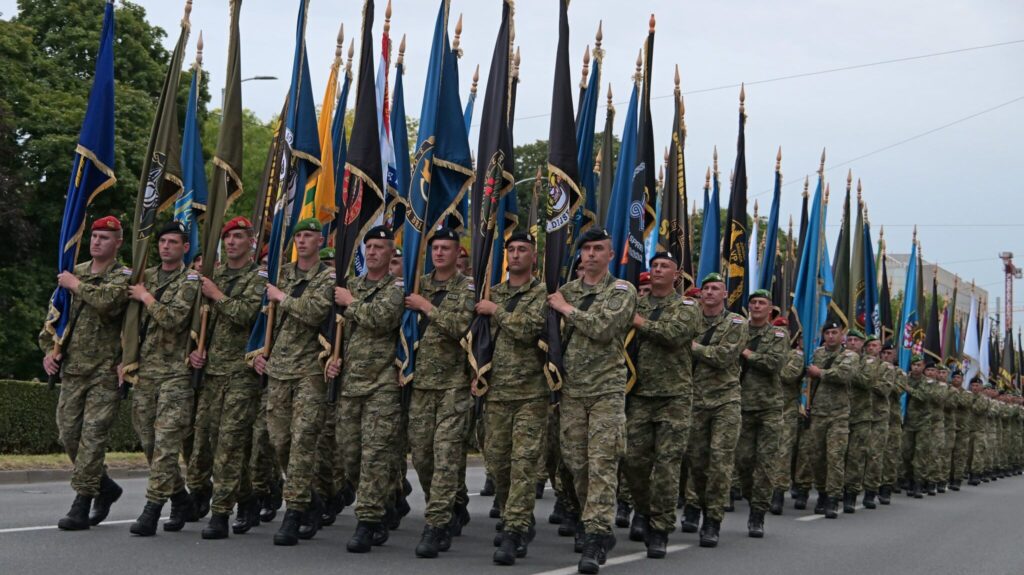
Approximately 3,500 armed forces and civilian personnel marched along Vukovar Street, symbolic in itself given the significance of that city in Croatia’s war of independence in the early 1990s. They were joined by troops from Albania, Lithuania, Poland, Slovenia, the United Kingdom and the United States. This multi-national presence highlighted the fundamental message: Croatia is now firmly embedded in the Euro-Atlantic defence architecture. Overall, the parade showcased over 450 combat vehicles, including two Leopard 2A4 main battle tanks (MBTs) and Bradley infantry fighting vehicles (IFVs), along with howitzers, modern combat aircraft and first-person view (FPV) drones, presenting a bold demonstration of Croatia’s defence capabilities.
A key highlight was the aerial component with 40 aircraft flying overhead, including French Rafale multirole fighters (which have replaced Croatia’s MiG-21s), Canadian ‘Super Scooper’ (Canadair) firefighting aircraft and US-sourced helicopter types, including the Black Hawk and Kiowa Warrior. The Rafales drew special attention among observers as a symbol of Croatia’s transition to Western military technology. Not forgotten was Croatia’s maritime capability, with the navy’s inclusion via live broadcast on large screens, showcasing 13 warships, thereby integrating all branches of the country’s armed forces into the parade.

Croatia’s messaging on this occasion avoided retribution or revanchism, favouring instead a tone of measured confidence and statehood marking three decades since the country emerged from a war that claimed roughly 20,000 dead and 30,000 injured to become a stable European democracy. Croatian Defence Minister Ivan Anušić stated that the parade focused on “honouring the past and demonstrating our readiness to defend the peace we have helped build”.
Operation ‘Storm’
Soon after Zagreb declared independence from Yugoslavia on 25 June 1991, a third of its territory was seized by Croatian Serb paramilitary formations supported by units of the Serb-led Yugoslav People’s Army (JNA). The four-day Operation ‘Storm’ was launched in the early hours of 4 August 1995 by the Croatian Army to reclaim territory held by the self-declared Republic of Serbian Krajina. Operation ‘Storm’ was at the time the largest land battle on the European continent since the Second World War, involving roughly 200,000 Croatian troops. The operation resulted in the reintegration of more than 10,000 km2 of formerly occupied Croatian territory and marked a critical point in the War of Independence. Full territorial integrity was reached only later in January 1998, when the United Nations Transitional Administration for Eastern Slavonia, Baranja and Western Sirmium (UNTAES) officially handed over control of that eastern region to the Croatian government.
Croatia’s War of Independence (1991–1995), referred to as the ‘Homeland War’ in Croatia, remains the foundation of the country’s national identity.
View from Belgrade
Though seen as a legitimate liberating action by the Croatians, for Serbia Operation ‘Storm’ represented the ‘ethnic cleansing’ of tens of thousands of Croatian Serbs from their ancestral homes (with sources claiming that up to 200,000 were displaced). In Serbia it remains a highly sensitive and contentious issue on the political agenda, with tension persisting to this day. The parade’s marking of the operation was predictably criticised by high-level Serbian officials led by President Aleksandar Vučić, who condemned it as “a glorification of war crimes”: a familiar statement in regional discourse. This bilateral tension remains unresolved, now aggravated by the war in Ukraine and Serbia’s continued close ties with Russia.
While Croatia has deepened its defence co-operation with NATO-aligned states in the region, it is Serbia – despite its declared EU membership aspirations – that refuses to join Western sanctions against Russia. And despite recently agreeing to purchase 12 French Rafale jets worth roughly EUR 2 billion, Belgrade nevertheless maintains close military ties with both China and Russia; in this regard President Vučić will attend a major military parade in China on 3 September this year and host one himself in Belgrade on 15 September.
Multi-national symbolism
What set the parade apart this year from previous commemorations was the visible presence of foreign troops. Alongside Croatian soldiers were troops from NATO allies, but their inclusion was not just symbolic; it reflected the increasingly integrated nature of Croatia’s defence posture as a NATO member.
The presence of Albanian troops, in particular, signalled a strengthening of Croatia’s subregional ties with NATO-aligned Western Balkan states. Croatia, Albania, North Macedonia and Kosovo have quietly built a bloc of defence co-operation within the broader NATO alliance, offering a counterweight to the pro-Russian policies of Serbia and its proxy entity in Bosnia and Herzegovina (BiH) – the Republika Srpska – and Hungary.
For Croatia this foreign participation also projects a sense of leadership. After all, hosting foreign troops in a domestic military parade, something normally reserved for major powers, indicates Zagreb’s rising confidence and the country’s determination to display cohesion within NATO’s southern flank. It also demonstrates Croatia’s evolution from a security consumer to a credible security contributor. In today’s volatile regional climate, Zagreb is increasingly positioning itself as a net provider of stability within the NATO alliance.
Reintroducing conscription
Discussions about reintroducing military conscription in Croatia have resurfaced several times since it was abolished in 2008. Most notably, in mid-2025, ahead of the military parade, the government again raised the idea, suggesting a three- to six-month programme to build up reserve forces, carry out basic military and disaster response training, and strengthen societal connections to the military. The conscription debate highlights growing concern – as elsewhere on the continent – over the preparedness of NATO’s armed forces in a fast-changing and highly volatile European security environment.
For his part Croatian President Zoran Milanović used the platform of the parade to express his support for “a new civic model of conscription” that would strengthen the link between society and the military. Defence planners argue it will help build reserves, improve civil defence and deepen public engagement with national security, all of which are key concerns in a geopolitical climate defined by hybrid threats. Those critical of the proposal, however, have expressed concern about cost and political polarisation. For now, no legislation has been put forward, but the parade certainly elevated the issue.
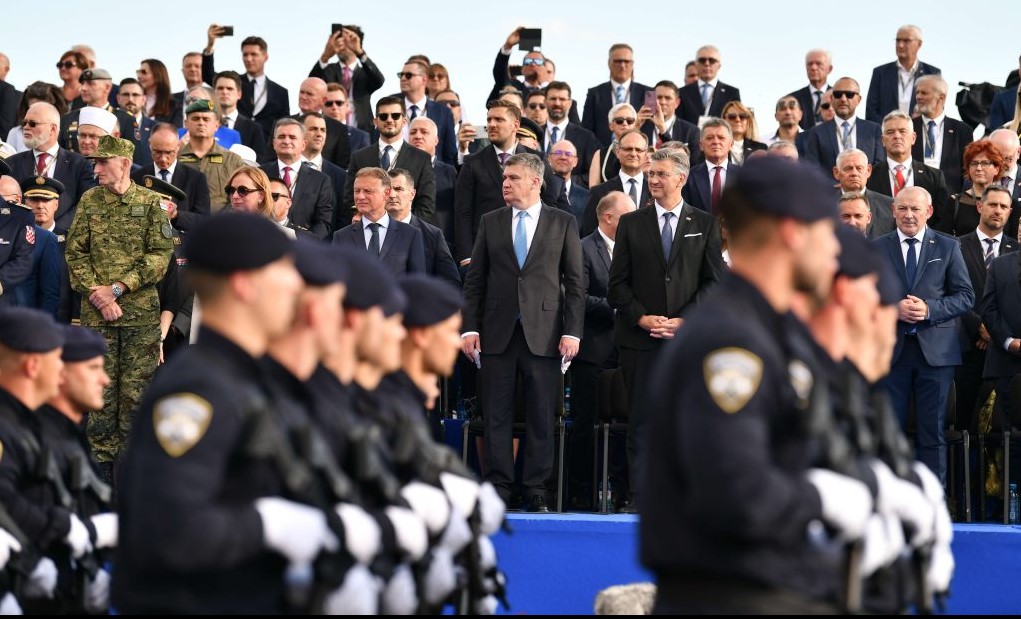
As part of the parade Croatia officially unveiled the Leopard 2A4HRV MBT, symbolically marking the tank’s entry into Croatian military service. Only two units have been delivered to date, with both reserved for training purposes and ceremonial use, serving as interim platforms ahead of the expected delivery from Germany of 50 Leopard 2A8 tanks starting in 2027. This follows the October 2024 Letter of Intent between Zagreb and Berlin that saw Croatia agreeing to donate 30 of its M-84 MBTs and 30 M-80 IFVs to Ukraine. The overall value of Croatia’s Leopard 2A8 procurement is estimated at EUR 1 billion; from this figure the EUR 144 million aid package to Ukraine – including the M-84 tanks and M-80 IFVs – is deducted. The procurement includes not only the tanks, but also spare parts, additional engines, tank transporters and engineering support vehicles. Once delivered, the Leopard 2A8s will fully replace Croatia’s remaining M-84A4 MBTs, thereby further aligning its armoured units with full NATO interoperability standards.
The parade’s spotlight on Croatia’s domestic defence industry was an important inclusion since Zagreb is quietly establishing a small but capable military industrial base. Croatian companies including HS Produkt, producer of the VHS-2 bullpup assault rifle, and DOK-ING, Croatia’s leading defence robotics company specialising in unmanned ground vehicles (UGVs) and robotic mine-clearance systems, are increasingly seen as competitive industry players in Europe’s complex defence market.
At the parade Croatian-made equipment stood proudly alongside Western platforms: anti-drone systems, engineering vehicles and small arms were all showcased. The message was clear: Croatia not only buys modern equipment from abroad, it can build it too. With EU defence procurement schemes shifting towards greater bloc-wide co-ordination, Zagreb is well positioned to punch above its weight.
NATO in the Adriatic
Croatia’s membership in NATO since 2009 has completely transformed its defence strategy. With the focus no longer on territorial defence, Croatian troops have been deployed to international missions from Afghanistan to Mali and have taken an active role in NATO’s Enhanced Forward Presence in Lithuania.
Now, with the war in Ukraine forcing a rethink of European security posture, NATO’s southern flank – considered a peripheral theatre for so long – is gaining greater strategic relevance. Croatia, with its ports, airfields and land corridors connecting Central Europe to the wider Balkan region, has a pivotal role to play.
Zagreb has actively lobbied for a greater NATO presence along the Adriatic. Discussions are ongoing about hosting a regional logistics hub, while Croatia has already participated in Black Sea security discussions alongside Romania and Bulgaria. Croatia’s strategic location, with its modern transport infrastructure, including the deep-water port of Rijeka with multi-modal road and rail links to neighbouring NATO countries, makes it ideally placed to host this facility. The 31 July parade was therefore part spectacle, part pitch: Croatia is sending strong signals to both Brussels and Washington that it stands ready to shoulder more responsibility.

In the accompanying speeches on 31 July clear parallels were made between Croatia’s own bloody experience in the early 1990s and Ukraine’s current war of survival. Both countries faced full-scale invasions by militarily superior neighbours; both saw towns destroyed, civilians displaced, and sovereignty challenged. This shared trauma has helped forge Croatia’s staunch support for Ukraine since 2022.
In its concrete support to Ukraine Zagreb has provided weapons, humanitarian aid and medical treatment to wounded Ukrainian soldiers, but more importantly Croatia has positioned itself as a potential post-conflict partner when it comes to Ukraine’s own reconstruction. Croatia’s painful transition, from a war-ravaged country to a stable EU and NATO member state, offers itself up in many ways as a blueprint for Kyiv.
The parade’s inclusion of civil defence forces and demining units also served a dual purpose: a reminder of what post-conflict rehabilitation and rebuilding means in reality, and yet another signal of Croatia’s soft-power niche in supporting post-conflict states. Officials say that several Ukrainian observers were present at the Zagreb parade, providing further evidence of this ever-closer bilateral connection.
Bosnia and Herzegovina: unfinished business
Any discussion of Croatia’s military posture must also include the unresolved tension and fragility in neighbouring BiH. The parade occurred just weeks after renewed political instability in Republika Srpska: the Serb-dominated and Serb-run entity within BiH where secessionist rhetoric has intensified under pro-Moscow President Milorad Dodik. Croatia, as a signatory of the 1995 Dayton Peace Agreement that brought about an end to the Bosnian War in 1995 and as a NATO member with a vested interest in BiH’s territorial integrity, continues to play a crucial role. Zagreb officially supports BiH’s sovereignty but remains critical of Sarajevo’s treatment of Bosnian Croat minorities.
President Milanović used the parade to remind observers that “Peace must be defended as actively as it is declared.” This was interpreted as a call for increased Western engagement in BiH, where the current EUFOR mission remains under-resourced. Croatian forces have repeatedly called for a more robust mandate for EUFOR and enhanced co-ordination with NATO.
Integrating BiH’s fragility into its defence narrative reveals Croatia’s pragmatic assessment of regional risks and its resolve to play a stabilising role. With a roughly 1,000 km-long border shared with BiH, Croatia has positioned itself as a guardian of regional security.
Soft power projection
Beyond displaying military equipment and marching formations together with NATO partners, the Zagreb parade served as an exercise in soft power. In recent years domestic support for the Croatian Armed Forces has increased steadily, particularly among younger citizens. Volunteer reservist numbers have grown and defence education programmes have been expanded in secondary schools.
Furthermore, the inclusion in the parade line-up of civil protection units, alongside cadets and veterans alike, created a narrative: from war, to recovery, to resilience. This is Croatia’s new strategic identity: a small but capable and stable country that endured a bloody war, rebuilt itself from scratch and now contributes to peace as a result.
A parade with purpose
Croatia’s 31 July military parade therefore was more than a simple exercise in commemoration; it should be seen as a clear and deliberate demonstration of strategic messaging. In its remembrance of Operation ‘Storm’, Zagreb paid tribute to its turbulent beginnings and its emergence as a modern, stable independent state. And in welcoming NATO allies and displaying modern weapons and equipment, Croatia sent a dual message: internally, one of reaffirming national pride and military progress; and externally, one of signalling Zagreb’s readiness, its alignment with NATO standards and its growing role as a regional stabilising force.
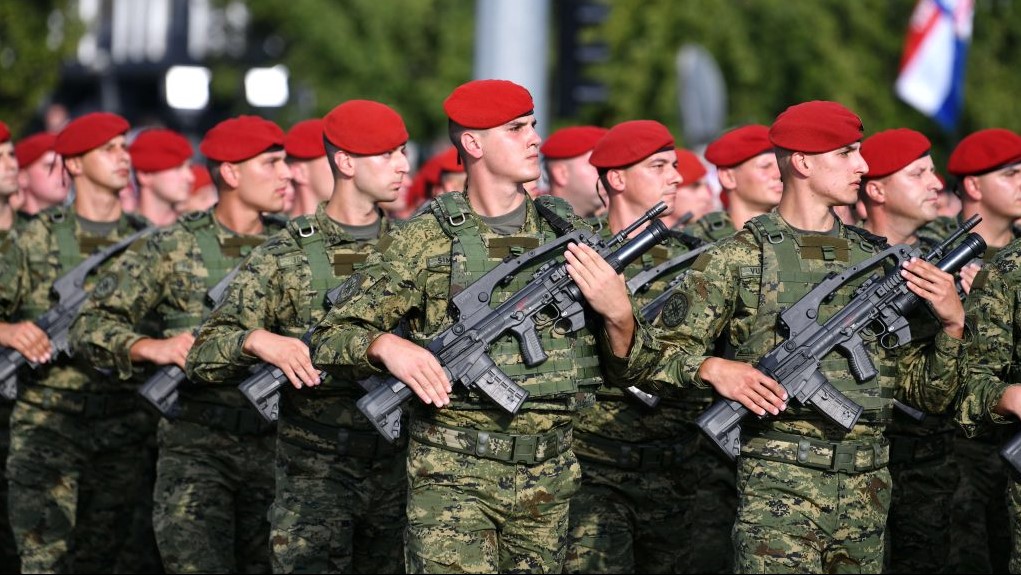




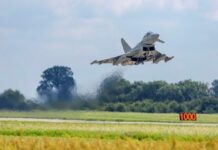
![Hybrid navies: Integrating uncrewed capability into carrier strike The US Navy (USN) carrier USS John C Stennis (left), the French Navy carrier FS Charles de Gaulle, and elements of their strike groups are pictured sailing together in US Fifth Fleet’s area of operations. The US, French, and UK navies are all developing ‘hybrid’ crewed/uncrewed mixes for their carrier airwing capability. [US Navy]](https://euro-sd.com/wp-content/uploads/2025/09/2-HST-CdG-USN-Kopie-218x150.jpg)
![Strategic shift: UK CSG deployment demonstrates switch in UK strategic focus The UK aircraft carrier HMS Prince of Wales (foreground) sails alongside the US carrier USS George Washington during Australia’s ‘Talisman Sabre’ exercise in July 2025. The two carrier strike groups (CSGs), plus Australian Navy assets, conducted CSG integration activities. [Crown copyright 2025]](https://euro-sd.com/wp-content/uploads/2025/09/1-PWLS-GW-TSabre-CC-UK-MoD-25-Kopie-218x150.jpg)

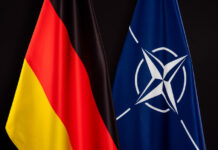
![Ukraine and the Western Balkans – from parallel pasts to a shared future Participants at the fourth Ukraine-Southeast Europe summit gathered in Odesa on 11 June 2025. [Office of the President of Ukraine]](https://euro-sd.com/wp-content/uploads/2025/07/Odesa-summit-2025_Office-of-the-President-of-Ukraine-Kopie-218x150.jpg)
![Ripples in the air, rupture in the ether Pictured: 1L269 Krasukha-2 jamming system. Since 2008, Russia has greatly expanded its EW capabilities, and since 2022 it has gained valuable direct experience contesting the EMS in Ukraine, where continuous innovation occurs over very short timescales. [RecoMonkey]](https://euro-sd.com/wp-content/uploads/2025/07/1L269-Krasukha-2_RecoMonkey-Kopie-218x150.jpg)

